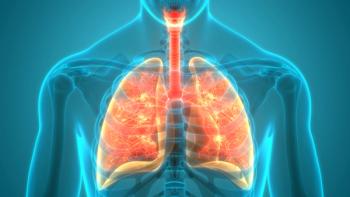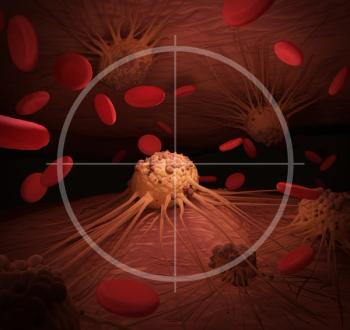
New study findings may pave the way for research into the prognostic value of white matter lesions in heart failure and the impact that HF therapies have on them.
Jaime is a freelance writer for The American Journal of Managed Care® (AJMC®), where she previously worked as an assistant editor.
She has a BA in print journalism from Penn State University. You can connect with Jaime on LinkedIn.

New study findings may pave the way for research into the prognostic value of white matter lesions in heart failure and the impact that HF therapies have on them.

A review explored the potential role of eosinophils and their mediators in the pathophysiology of chronic rhinosinusitis (CRS) subtypes.

Integrating novel parameters into conventional risk stratification systems may better define patient subgroups in myelodysplastic syndromes (MDS), thus creating a more enhanced classification and prognostic scoring system for patients, say researchers.

Questions remain about the optimal approach to transfusion management in myelodysplastic syndromes (MDS), particularly in the outpatient setting, leading a pair of researchers to review current evidence.

The review of 32 studies revealed that biologic treatment tended to favor patients with allergic bronchopulmonary aspergillosis (ABPA) and asthma rather than those with cystic fibrosis (CF).

Immunosuppressed patients who had an autoimmune disease (AD) were significantly less likely to develop severe acute respiratory distress syndrome (ARDS) compared with patients who were not immunosuppressed and did not have an AD.

Although research has cemented BMPR2 mutations as having associations with the development of pulmonary arterial hypertension, the germline mutations are not the only culprit.

Both secukinumab 300 mg and secukinumab 150 mg significantly improved signs and symptoms of axial disease in patients with psoriatic arthritis (PsA) who had inadequate response to non- steroidal anti-inflammatory drugs.

Researchers analyzed the available evidence on the treatment’s efficacy and safety profile from the RADIANCE and SUNBEAM trials.

With a goal of moving toward more individualized therapeutic approaches, researchers said future advancements in understanding myelodysplastic syndrome (MDS) molecular mechanisms are needed to offer clinical decision making guidance.

In a new review, researchers outline both the underlying pathological mechanisms and potential therapeutic targets in pulmonary arterial hypertension (PAH).

Researchers explored the risk of cardiovascular disease (CVD) as it relates to factors like excess weight, disease evolution time, and clinical activity.

Researchers review pulmonary function testing measures that span 4 categories that can assess the respiratory muscle dysfunction that happens in diseases like spinal muscular atrophy (SMA).

Researchers found abnormal coherence patterns in survivors of childhood polio.

Their work may help to further understanding of the molecular mechanisms of hypomethylating agents (HMAs) and offer a guide for determining which patients are likely to respond to such treatment.

Compared with adalimumab, sarilumab elicited greater improvements in health-related quality of life (QoL), particularly in patients with high levels of interleukin-6 (IL-6).

For patients who are resistant to hypomethylating agent (HMA) treatment, there are no formal treatment recommendations, but several options, spanning from novel HMAs to chemotherapy, have been or are currently being studied in the setting.

A review published earlier this year examines the rationale and evidence for using a multidrug approach in pulmonary arterial hypertension (PAH).

The study showed that that patients with higher disease activity had significantly lower levels of physical activity.

The abstract, presented at the 2020 American Society of Hematology Annual Meeting and Exposition, found favorable overall survival and leukemia-free survival for these patients.

Recent years have seen calls for genetic testing for all patients with breast cancer. A session at the 2020 San Antonio Breast Cancer Symposium reviewed the evidence for, and against, such testing.

Hope Rugo, MD, director of Breast Oncology and Clinical Trials Education at the UCSF Helen Diller Family Comprehensive Cancer Center, discusses the benefits of oral paclitaxel in metastatic breast cancer.

A group of researchers published their research on the various underlying etiologies of pulmonary arterial hypertension (PAH), as well as predictive factors of pulmonary artery aneurysms (PAAs).

Long-term follow-up of the treatment showed that while it has a favorable safety profile, the treatment does not offer significant efficacy for patients with spinal muscular atrophy (SMA) type 2 and non-ambulant type 3.

During the San Antonio Breast Cancer Symposium 2020, Lajos Pusztai, MD, DPhil, of Yale Cancer Center, reviewed recently established and emerging biomarkers in both the neoadjuvant and metastatic breast cancer settings.

The first session at the San Antonio Breast Cancer Symposium 2020 looked at how the COVID-19 pandemic is disproportionately affecting care for minority patients.

Between the first introduction of population carrier screening in 2008 and its expansion to the full Israeli population in 2013, the mean rate of prenatal diagnoses per year was 4.66, and this rose to 7.75 between 2014 and 2017, a 66% increase.

For infants, the main driver of these increased costs came from inpatient visits vs outpatient visits among children and juveniles.

Two studies presented at CHEST 2020 assessed the impact of macitentan on cardiac function in pulmonary arterial hypertension (PAH) and determined what role reproducible exercise echocardiographic parameters have in predicting survival.

Treatment with risdiplam may not elicit ophthalmologic toxicity in older patients, as well as infants with immature retinas.

259 Prospect Plains Rd, Bldg H
Cranbury, NJ 08512
© 2025 MJH Life Sciences®
All rights reserved.
